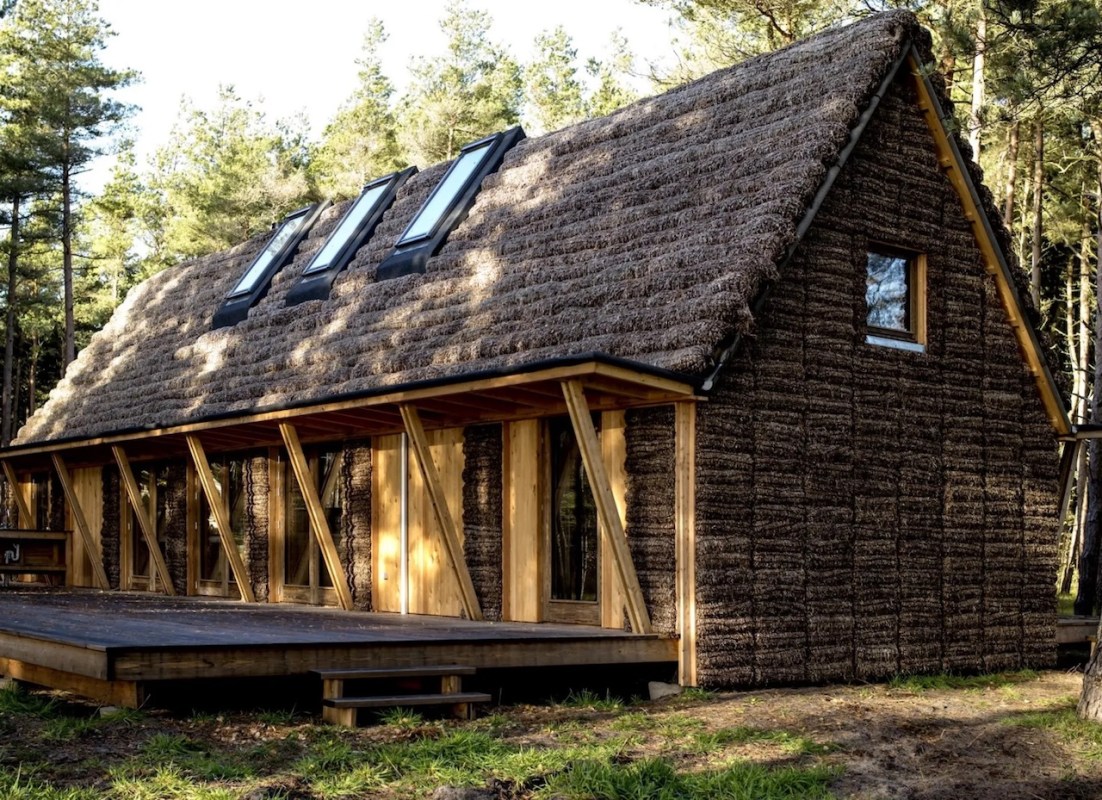Seaweed may prove to be a revolutionary tool in constructing and weatherizing future homes.
The natural material is antibacterial, moisture-absorbing, nontoxic, and resistant to fire, and it is now growing more rapidly because of increased levels of carbon dioxide, all according to the UK-based Building Centre. That means there's never been a better time to embrace its potential. (You can see photos of the homes here.)
Seaweed has reportedly been used in constructing buildings since the era of the ancient Greeks, who used the material as wall insulation. Per the Building Centre, the Greeks would fill wooden frames with seaweed and cover them with plaster or clay in order to keep their homes warm.
Additionally, according to Haeckels, Danish people would use seaweed in home construction, and 20 houses from the Viking era still stand on the island of Læsø, Denmark, today.
In modern times, it's especially important to embrace new construction techniques, as concrete usage has contributed to a dangerous rise in global temperatures.
🗣️ When was your home built?
🔘 Less than 10 years ago 👶🏾
🔘 10-25 years ago 🧒🏾
🔘 25-50 years ago 👨🏾
🔘 Over 50 years ago 🧓🏾
🗳️ Click your choice to see results and speak your mind
According to Haeckels, "About one metric ton [1.1 U.S. tons] of CO2 is released for every one metric ton of cement produced." This is because of the heating process and chemical reaction during the production cycle. Seaweed homes, on the other hand, reduce harmful pollution, as the marine plant absorbs more carbon than construction produces for each home.
There are a number of projects using seaweed already completed or underway.
The Modern Seaweed House, designed by the Vandkunsten firm, is one such home, as detailed by the Building Centre. Completed in 2013, the structure uses a wood frame and seaweed insulation, similar to an ancient Greek method.
The project, which is in Læsø, is insulated by nets that are stuffed with seaweed and then fixed to the facade and the roof of the building. This method absorbs water particles, deters fire, and maintains a consistent temperature.
Meanwhile, Nir Meiri — a designer based in London — also uses natural materials from the ocean for architectural projects, and one of his most important materials is seaweed. Meiri uses the material to make desk lamps, as well as fish scales to create tables and sea salt to construct pendant lights, according to the Building Centre.
Seaweed is also being used as a construction material and for other products in Mexico and the United States.
Join our free newsletter for easy tips to save more, waste less, and help yourself while helping the planet.









